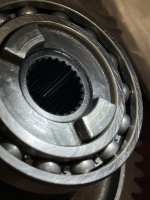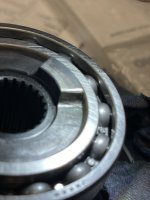Steelauzzy
New member
- Joined
- Jun 23, 2021
- Messages
- 14
- Tractor
- Kubota rtv 500 bx 2650 tv140 kc series ox series svl series
I’m 2018 I bought 3 identical rtv500’s with sequential serial numbers for use on a golf resort project I was working on. Within the first 25-50 hours all three differential locks on all three units failed. Not catastrophic just stopped grabbing. As most of our use was on the resort and in our gravel yard it wasn’t a high priority.
recently I took the first unit in to the dealer before the warranty was up to get it sorted. Assuming this would be no biggie. After sitting in their yard for a couple months they called and said there was a chance it would not be covered if it was obvious that it was abused. And that it was expected to be 24 hours to just inspect or around 2000$.
Fast forward another month they called me with a bill for 6000$. Of course this is half the cost of a new unit so I was much less than impressed.
I requested to inspect the components to see why why had ruled it operator abuse. Upon very close inspection with a bright light there was a hairline crack in the casting at the corner of both locker contacts. The surface of the contact was also polished and probably had a coupler thou wear. Yes you would litterally need a microscope or micrometer and a good part to compare any measurable wear.
The manager said this is common in diffs that have been worked hard. And in his experience he has seen this tons. He also said that if it was a design issue there would be tons of other units with the same problem. And since they had never heard of it that it must be our fault. Specifically they said we must have had a wheel in the air revved to top speed then engaged the locker. This was a change from their original story that we must have locked the diff while moving.
my first question was how such a small change in the angle of the contact and a hairline crack would render the locker non functional. Also given that the back side contact wasn’t worn it didn’t offer a theory as to why it didn’t work driving backwards.
so I have requested the old parts and a set of new parts to take to a lab to get testing. I’m also wondering if anyone else has had any issues with their diffs. You pretty much need to get stuck and have someone watching to see if it’s bad.
I plan on getting to the bottom of this and it will be interesting to open up the other two machines to see how they failed last kubota wouldn’t let me see the other side of the coupling or the mechanism that pushes it together.
recently I took the first unit in to the dealer before the warranty was up to get it sorted. Assuming this would be no biggie. After sitting in their yard for a couple months they called and said there was a chance it would not be covered if it was obvious that it was abused. And that it was expected to be 24 hours to just inspect or around 2000$.
Fast forward another month they called me with a bill for 6000$. Of course this is half the cost of a new unit so I was much less than impressed.
I requested to inspect the components to see why why had ruled it operator abuse. Upon very close inspection with a bright light there was a hairline crack in the casting at the corner of both locker contacts. The surface of the contact was also polished and probably had a coupler thou wear. Yes you would litterally need a microscope or micrometer and a good part to compare any measurable wear.
The manager said this is common in diffs that have been worked hard. And in his experience he has seen this tons. He also said that if it was a design issue there would be tons of other units with the same problem. And since they had never heard of it that it must be our fault. Specifically they said we must have had a wheel in the air revved to top speed then engaged the locker. This was a change from their original story that we must have locked the diff while moving.
my first question was how such a small change in the angle of the contact and a hairline crack would render the locker non functional. Also given that the back side contact wasn’t worn it didn’t offer a theory as to why it didn’t work driving backwards.
so I have requested the old parts and a set of new parts to take to a lab to get testing. I’m also wondering if anyone else has had any issues with their diffs. You pretty much need to get stuck and have someone watching to see if it’s bad.
I plan on getting to the bottom of this and it will be interesting to open up the other two machines to see how they failed last kubota wouldn’t let me see the other side of the coupling or the mechanism that pushes it together.


